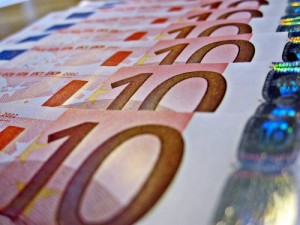Forex Currency Markets
You may think trading in the in Forex Currency Markets is an entirely different ball game than trading in the stock market. But, they both rely on many of the same rules. The same two principles still apply. Whether you’re trading in stocks or currencies, both technical and fundamental analysis still applies.
It’s easy to see how technical analysis, i.e. analyzing charts to identify patterns and trends that may hint at what a market will do in the future clearly applies to both stock and currency trading, how about fundamental analysis?
Fundamental Analysis of Forex Currency Markets
 Unlike companies, you can’t check a country’s balance sheets, so you have to find other ways to conduct fundamental analysis. With a company, you’d look at factors like financial statements, management teams and competitive advantages. And you can do the same to try to determine currency movements if you think along the same lines for a country. There is a wealth of information available in economic reports which can help you predict whether currency values are likely to move.
Unlike companies, you can’t check a country’s balance sheets, so you have to find other ways to conduct fundamental analysis. With a company, you’d look at factors like financial statements, management teams and competitive advantages. And you can do the same to try to determine currency movements if you think along the same lines for a country. There is a wealth of information available in economic reports which can help you predict whether currency values are likely to move.
Tracking Forex Market Indicators
To make sure you keep track of indicators and when they are due to be released, keep an economic calendar on hand with a comprehensive list and don’t wait until a report has actually been released – often markets will move in anticipation of news rather than waiting for the details. Remember the old saying “Buy the Rumor- Sell the News”.
Factors to look at include:
A country’s Gross Domestic Product (GDP)
The broadest measure of a country’s economy, GDP shows the total market value of goods and services produced by a country but most Forex traders don’t wait for the final statistics to come out, instead looking at two preliminary reports which are released weeks or months in advance – that’s why you can get volatility in the forex if there are big changes between the first and final reports. If GDP rises, currency values tend to follow. The New Zealand economy has just accelerated by 1.1%, for example, sending its currency soaring against the US dollar.
Retail Sales
Retail sales measurements give an indicator of broad consumer spending patterns, allowing traders to examine the immediate direction of an economy. It’s the closest to looking at the sales activity of a publicly traded company. If a strong figure comes out showing healthy spending by consumers, it will boost the value of a country’s currency. When UK retail sales increased by 0.9 per cent in May, the pound rose against other major currencies, up 0.3% against the Euro and 0.6 per cent against the Yen.
Industrial production
Being a manufacturing hub is important to a country’s forex currency market. This report shows production rates in a nation’s factories, mines and utilities, also looking at whether companies are working to capacity. For currency rates to rise, the ideal is an increase in production so factories are near maximum capacity. Just because industrial production rates are falling though doesn’t necessarily mean a currency will follow suit. Often problems are followed by positive interventions from central banks, meaning currency values can actually rise in anticipation of action.
Consumer Price Index
This provides a measure of the price of goods and services and the underlying economic trends. It’s useful to compare against export data to see if a country is making or losing money on its consumer products. Also known as the cost-of-living index, it shows rising inflation if prices are increasing and the opposite if they are declining. If prices are up because of high demand, currencies can rise in value. But, if inflation is rising and wages are not keeping up then currency prices tend to decline. Sterling fell against the Euro in June as investors were worried further quantitative easing measures could be introduced as a result of weaker than forecast inflation.
Employment Reports
These can have an immediate impact on currencies. As unemployment increases, consumer spending falls, meaning spending is reduced. As the economy slows down as a result of declining confidence, a nation’s forex currency value can follow. The US Non-Farm Payroll, is among the most anticipated employment reports, with the dollar plummeting against the Yen following May’s statistics, which showed a slowdown in hiring. However, the dollar later rallied as a result of the Bank of Japan’s interventions to control its own currency so it’s important to look at pairings of currencies rather than individual money markets.
These reports are just the tip of the iceberg when it comes to predicting currency trends. Other factors include interest rates, growth expectations, central bank actions, trade flows, public debt, political stability and even natural disasters and conflict. When taken together with technical analysis of how past events and statistics have affected currency markets, they can all prove invaluable tools for currency traders.
See Also:
Determining Currency Trends in the Forex Market
What are You Really Buying in the Forex Currency Market?
Do You Know Your Currency Pairs?
Elliott Wave Forex Trading Video: It’s Not The News That Matters
A Basic Guide To Forex Trading
